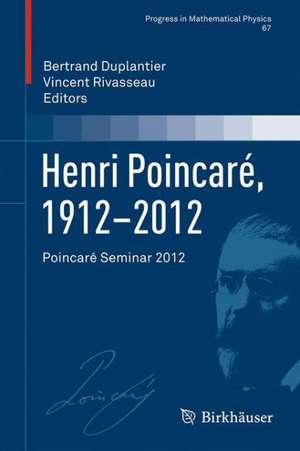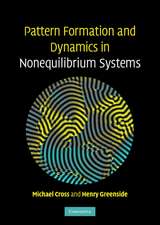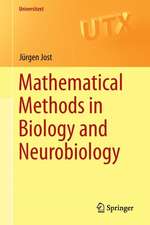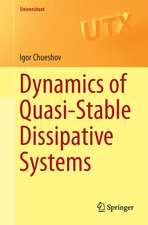Henri Poincaré, 1912–2012: Poincaré Seminar 2012: Progress in Mathematical Physics, cartea 67
Editat de Bertrand Duplantier, Vincent Rivasseauen Limba Engleză Hardback – 2 dec 2014
This book will be of broad general interest to physicists, mathematicians, philosophers of science and historians.
Din seria Progress in Mathematical Physics
-
 Preț: 377.18 lei
Preț: 377.18 lei -
 Preț: 398.92 lei
Preț: 398.92 lei -
 Preț: 395.25 lei
Preț: 395.25 lei -
 Preț: 391.02 lei
Preț: 391.02 lei -
 Preț: 396.62 lei
Preț: 396.62 lei -
 Preț: 396.62 lei
Preț: 396.62 lei - 20%
 Preț: 481.48 lei
Preț: 481.48 lei -
 Preț: 399.29 lei
Preț: 399.29 lei -
 Preț: 391.02 lei
Preț: 391.02 lei -
 Preț: 381.98 lei
Preț: 381.98 lei - 18%
 Preț: 1239.85 lei
Preț: 1239.85 lei - 18%
 Preț: 1118.93 lei
Preț: 1118.93 lei - 15%
 Preț: 649.87 lei
Preț: 649.87 lei - 15%
 Preț: 575.10 lei
Preț: 575.10 lei - 18%
 Preț: 786.18 lei
Preț: 786.18 lei - 15%
 Preț: 656.10 lei
Preț: 656.10 lei -
 Preț: 395.25 lei
Preț: 395.25 lei -
 Preț: 382.18 lei
Preț: 382.18 lei - 15%
 Preț: 648.56 lei
Preț: 648.56 lei - 15%
 Preț: 649.06 lei
Preț: 649.06 lei - 15%
 Preț: 645.60 lei
Preț: 645.60 lei -
 Preț: 392.21 lei
Preț: 392.21 lei - 15%
 Preț: 595.86 lei
Preț: 595.86 lei -
 Preț: 409.13 lei
Preț: 409.13 lei - 15%
 Preț: 690.62 lei
Preț: 690.62 lei - 15%
 Preț: 704.69 lei
Preț: 704.69 lei - 15%
 Preț: 654.43 lei
Preț: 654.43 lei - 15%
 Preț: 646.30 lei
Preț: 646.30 lei -
 Preț: 398.35 lei
Preț: 398.35 lei -
 Preț: 402.76 lei
Preț: 402.76 lei - 15%
 Preț: 588.50 lei
Preț: 588.50 lei -
 Preț: 388.72 lei
Preț: 388.72 lei - 18%
 Preț: 781.62 lei
Preț: 781.62 lei -
 Preț: 408.16 lei
Preț: 408.16 lei -
 Preț: 391.79 lei
Preț: 391.79 lei
Preț: 784.92 lei
Preț vechi: 957.22 lei
-18% Nou
Puncte Express: 1177
Preț estimativ în valută:
150.19€ • 156.81$ • 124.30£
150.19€ • 156.81$ • 124.30£
Carte tipărită la comandă
Livrare economică 04-18 aprilie
Preluare comenzi: 021 569.72.76
Specificații
ISBN-13: 9783034808330
ISBN-10: 303480833X
Pagini: 240
Ilustrații: XIII, 233 p. 33 illus., 14 illus. in color.
Dimensiuni: 155 x 235 x 22 mm
Greutate: 0.53 kg
Ediția:2015
Editura: Springer
Colecția Birkhäuser
Seria Progress in Mathematical Physics
Locul publicării:Basel, Switzerland
ISBN-10: 303480833X
Pagini: 240
Ilustrații: XIII, 233 p. 33 illus., 14 illus. in color.
Dimensiuni: 155 x 235 x 22 mm
Greutate: 0.53 kg
Ediția:2015
Editura: Springer
Colecția Birkhäuser
Seria Progress in Mathematical Physics
Locul publicării:Basel, Switzerland
Public țintă
ResearchCuprins
Foreword.- 1 Olivier Darrigol - Poincaré's light.- 2 Alain Chenciner - Poincaré and the three-body problem.- 3 Laurent Mazliak: Poincaré's odds.- 4 François Béguin - Henri Poincare and the uniformisation of Riemann surfaces.- 5 Philippe Worms, Harmony and chaos. On the figure of Henri Poincare.
Textul de pe ultima copertă
This thirteenth volume of the Poincaré Seminar Series, Henri Poincaré, 1912-2012, is published on the occasion of the centennial of the death of Henri Poincaré in 1912. It presents a scholarly approach to Poincaré’s genius and creativity in mathematical physics and mathematics. Its five articles are also highly pedagogical, as befits their origin in lectures to a broad scientific audience. Highlights include “Poincaré’s Light” by Olivier Darrigol, a leading historian of science, who uses light as a guiding thread through much of Poincaré ’s physics and philosophy, from the application of his superior mathematical skills and the theory of diffraction to his subsequent reflections on the foundations of electromagnetism and the electrodynamics of moving bodies; the authoritative “Poincaré and the Three-Body Problem” by Alain Chenciner, who offers an exquisitely detailed, hundred-page perspective, peppered with vivid excerpts from citations, on the monumental work of Poincaré onthis subject, from the famous (King Oscar’s) 1889 memoir to the foundations of the modern theory of chaos in “Les méthodes nouvelles de la mécanique céleste.” A profoundly original and scholarly presentation of the work by Poincaré on probability theory is given by Laurent Mazliak in “Poincaré’s Odds,” from the incidental first appearance of the word “probability” in Poincaré’s famous 1890 theorem of recurrence for dynamical systems, to his later acceptance of the unavoidability of probability calculus in Science, as developed to a great extent by Emile Borel, Poincaré’s main direct disciple; the article by Francois Béguin, “Henri Poincaré and the Uniformization of Riemann Surfaces,” takes us on a fascinating journey through the six successive versions in twenty-six years of the celebrated uniformization theorem, which exemplifies the Master’s distinctive signature in the foundational fusion of mathematics and physics, on which conformal field theory, string theory and quantum gravityso much depend nowadays; the final chapter, “Harmony and Chaos, On the Figure of Henri Poincaré” by the filmmaker Philippe Worms, describes the homonymous poetical film in which eminent scientists, through mathematical scenes and physical experiments, display their emotional relationship to the often elusive scientific truth and universal “harmony and chaos” in Poincaré’s legacy.
This book will be of broad general interest to physicists, mathematicians, philosophers of science and historians.
This book will be of broad general interest to physicists, mathematicians, philosophers of science and historians.
Caracteristici
Renowned scientists present their view on Poincaré´s manifold contributions to mathematical physics Addresses students and researchers in physics, mathematics and history of science Based on educational lectures given at the Institut Henri Poincaré in Paris










